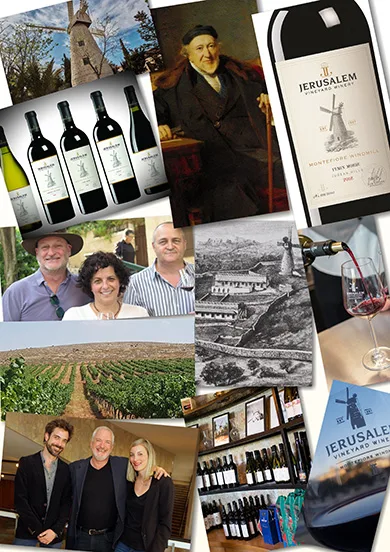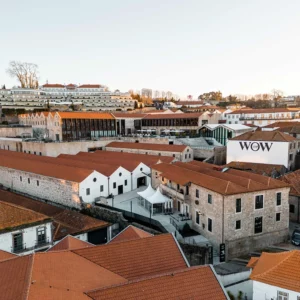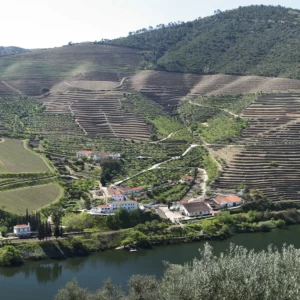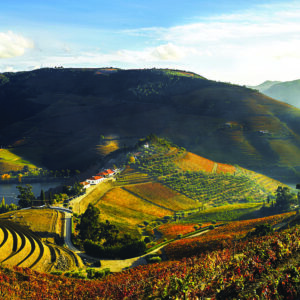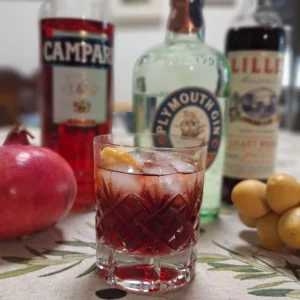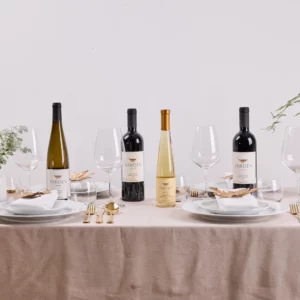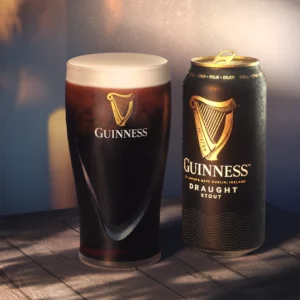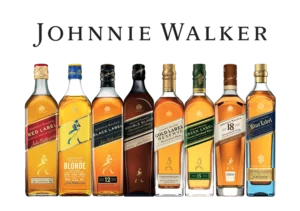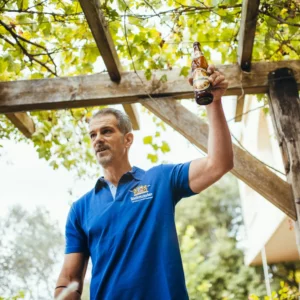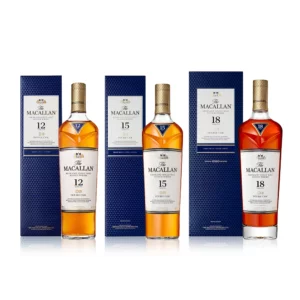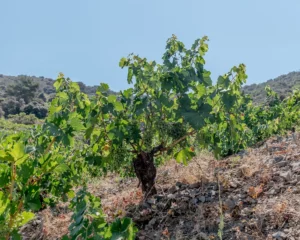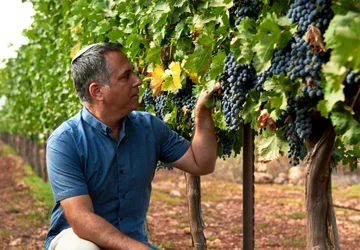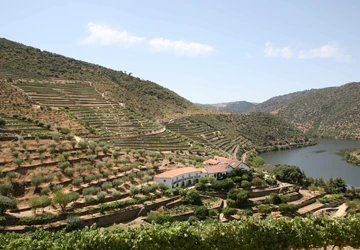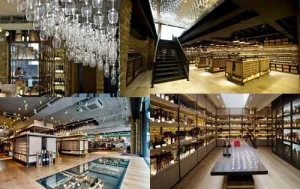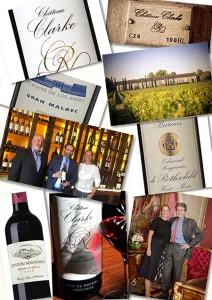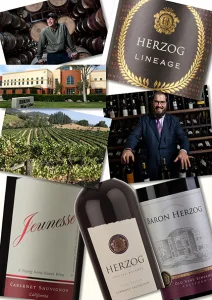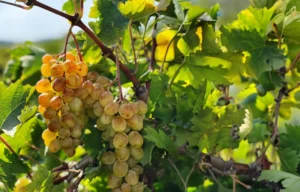The Montefiore Windmill was built in 1857 and became a symbol of modern Jerusalem and a prominent part of the Jerusalem skyline. It is situated at Mishkenot Sha’ananim, founded by Sir Moses Montefiore, which was the first neighborhood outside the Old City Walls of Jerusalem. Now 162 years later, the windmill has been turned into a unique winery tasting room and visitors center. When I was recently invited to connect the dots between family, Mishkenot Sha’ananim and the windmill, I jumped at the chance. As a wine trade veteran and student of Israel wine history, I could not help but add the many relevant wine references at every stage.
Sir Moses Montefiore was a humanitarian, campaigner for Jewish emancipation, forerunner of Zionism and the world’s unofficial ambassador for the Jewish people. His coat of arms featured a lion holding a pendant with Jerusalem written on it……an idea since adopted by the Jerusalem municipality! He travelled to Israel no less than seven times, riding in his small carriage, the last time at the grand old age of 91!
Montefiore purchased the land, that was to become the cornerstone of modern Jerusalem, in 1855. The area was stony and bare, apart from olive trees and wild vines, so he named it Kerem Moshe v’ Yehudit – Moses’ and Judith’s Vineyard. (Lady Judith was his wife.) Part of Kerem Moshe was renamed Mishkenot Sha’ananim in 1860, and the second, larger part was renamed Yemin Moshe in 1892.
The use of the word ‘vineyard’ in the name, was not a coincidence. It is not common knowledge, but Moses Montefiore was a wine lover, who drank a bottle of wine every single day and lived to his 101st year! This was an incredible age in that era and provided early evidence about the healthy properties of wine. His preferred tipple was Port, the fortified wine from Portugal. The family folklore says that in the hours before he passed away, he drank three glasses of port. Seems to me the right way to go!
We know from their diaries, that Moses and Judith were passionate tourists, who loved travelling, and wine received surprisingly frequent mentions. Every community they visited, presented them with wine. We have no idea what the wine was, though ‘Hebron wine’ is mentioned a great deal. This would have been from Arab owned vineyards near Hebron, using local varieties like Hamdani, Jandali, Dabouki, and the wines may have been made by wineries such as Ginio, Shor and Teperberg, amongst others. The Montefiores also purchased wine in small casks as souvenirs. This was before the world of glass bottles, brands, labels and kashrut certificates! The interest was not only in Israel. Once they wrote about visiting a winery in what is now Germany. Judith pondered whether treading on grapes with bare feet affected the taste of the final wine!
Moses Montefiore was captivated by the scenery here, and mentions vineyards many times in his diaries. For instance he wrote: “the mountains are cultivated in terraces and planted to the summit with vines and olives…..it would be impossible to travel through a richer or more beautiful country.” This was about the same time that Mark Twain called the Holy Land “a desolation.” I suppose this is the difference between the cup being seen as half full or half empty!
Way back in 1839, Montefiore outlined his vision. He said that the poor Jewish community should work instead of living off donations and was the first to recommend a return to agriculture. The purchasing of both his orchard in Jaffa (now the Montefiore Quarter of Tel Aviv) and Kerem Moshe in Jerusalem, followed by the building of the windmill, were all part of this.
Moses Montefiore also suggested people should plant vines and olive trees to get a taste for agriculture. This was a first call to plant vines and yet, apart from the small Kerem Avraham vineyard and the Mikveh Israel Agricultural School, the planting of Jewish vineyards only began in earnest from 1882. This was with the finance and expertise of Baron Edmond de Rothschild. Moses Montefiore was close to the Rothschilds. He was the neighbor, business partner and brother in law of Nathan Mayer Rothschild. Incidentally, he was also the uncle of Nathaniel Rothschild, who purchased Chateau Mouton Rothschild, one of the world’s most famous wineries, in 1853.
David Ben Gurion, Israel’s first prime minister, who once worked at Rishon Le Zion Cellars, referred to Moses Montefiore as one of the father figures of Jewish agriculture in the 19th century. Interestingly he also referred to the Damascus Affair of 1840, where Montefiore was one of the main players, as the true beginning of Zionism.\n\nMoses Montefiore did not have any children. His chose his favorite nephew Joseph, son of his sister, as his heir, and the Sebag Montefiore family was born. Sir Joseph Sebag Montefiore was my great, great grandfather. He accompanied Moses on his last two visits here. When Yemin Moshe was founded, he was a signatory in the agreements for the new tenants.
As far as family roots are concerned, the Montefiores came from the Marche and Romagna regions of Italy, on the Adriatic coast, moved to Livorno and then on to England. The Sebags hailed from Mogador, now known as Essaouira, on the Atlantic, western coast of Morocco. The word Montefiore means ‘mountain flower’ (a Sephardi equivalent to the Ashkenazi Blumberg!) The word Sebag refers to the profession of dyers. My wife and I continued the family journey by coming to Israel in 1989 with three children. We were the first from the family ever to make Aliyah.
I had worked in the drinks industry and wine trade in the UK, and had my first exposure to Israeli wine working with Yarden, Gamla and Golan wines in the eighties. When I came to Israel, I devoted myself to Israeli wine, working for both the Golan Heights Winery and Carmel for the next twenty-six years. Two of my children, David & Rachel Montefiore, the 6th generation after Moses Montefiore, also worked in the wine trade.
Which leads me back to the beginnings of Israel’s modern wine history. The Shor family are Israel’s oldest wine producing family. They are still making wine after 170 years. They founded their family winery in 1848 in the Old City of Jerusalem, in order to earn a living. Exactly as Moses Montefiore had recommended. Their first harvest coincided with Montefiore’s third visit. In yet another of the repeated coincidences that connect the dots of this story, the very first evidence of their new profession may be found in the census commissioned by Moses Montefiore in 1849.
In the mid 1940’s, before the founding of the state, the Shor family winery was divided into two, to accommodate the growing family. Avraham Meir Shor decided to concentrate on the production of wine and the winery was renamed Zion Winery. His brother, Moshe Shalom Shor founded Shimshon Winery, which focused on spirits and grape juice. However, it was not an acrimonious split. Originally, both were even situated in the same building in the Jerusalem’s Beit Israel neighborhood. A wall separated the two wineries. Apparently, sometimes the all-pervasive smell of arak would seep through to the wine production area!
Moshe Shalom’s sons went on to found the wineries which are known today as Arza and Hacormim. His daughter, Tzippora Shor founded a winery in 1951 with her husband Yonah Mendelson, which they called Shimshon, using the name already in the family. In 1976 Shimshon Winery moved to Atarot in the northern periphery of Jerusalem. It was a winery focused on liquid religion, in other words grape juice and kiddush wine. In 2006 Ofer Guetta, businessman and entrepreneur, purchased the winery and renamed it Jerusalem Wineries. (It is known as ‘Jerusalem Vineyard Winery’ in export markets.) Already by then, it was the last remaining winery in Jerusalem.
In time, Jerusalem Wineries grew to become one of the ten largest wineries in Israel. However, this was not enough for Guetta. He decided to create a new team to bring the winery into the 21st century. He appointed the impressive and dynamic Erez Winner as CEO. Col. Erez Winner was previously the assistant to the former IDF Chief of Staff, Gabi Ashkenazi. He chose Canadian Sam Soroka as winemaker. Soroka has made wine in no less than five different countries, Australia, California, Canada, France and Israel and is considered one of the best winemakers in Israel. He has been in Israel since 2003 working for Carmel at Zichron Ya’acov Cellars & Rishon Le Zion Cellars, then Mony Winery & Kerem Montefiore. He joined Jerusalem five years ago. Guetta also appointed the experienced and talented Carmit Ehrenreich, ex Golan Heights Winery and Galil Mountain, as marketing and export manager. This dream team have advanced the winery considerably. New equipment was purchased, the winery was rebranded and the wines started to gain awards and high scores, both within Israel and internationally.
In 2019 Jerusalem Wineries opened their tasting room and visitors center at the Montefiore Windmill. It had been refurbished in 2012 with a donation provided by Dutch Christians. It was reopened by the Prime Minister, Benjamin Netanyahu in a grand ceremony. My brother, historian Simon Sebag Montefiore (author of Jerusalem: The Biography), represented the family from England, and David, Rachel & I, represented the Israeli part of the family. It was certainly moving to see the windmill working for the first time in our lifetimes.
In the windmill, there had previously been a small but interesting museum about the life of Moses Montefiore, put together by my cousin. Now Jerusalem Wineries, with the cooperation of the Jerusalem Foundation and Zuzu Tourism, has opened this new wine attraction in the windmill itself. This has brought wine back to Mishkenot Sha’ananim. When I came to Israel, the most famous restaurant here was the Mishkenot Sha’ananim Restaurant owned by Moise Peer. It was famous primarily for its international wine list and for the quality of its cellar. Mayor Teddy Kollek was a regular visitor, and regularly hosted prime ministers, presidents and many important dignitaries. The restaurant only closed with the onset of the second intifada.
To commemorate the opening of the tasting room, which must be one of the most unique wine venues in Israel, Jerusalem Wineries launched a series of rare, boutique wines called Montefiore Windmill, primarily for sale in the windmill itself. There are two entry level wines, a Sauvignon Blanc and Malbec; four reserve wines: Chardonnay, Shiraz, Merlot and Cabernet Sauvignon; and finally, a prestige Bordeaux style blend, called Yemin Moshe, made from Cabernet Sauvignon, Merlot and Petit Verdot. The grapes were grown in the high elevation Judean Hills vineyards, similar to those mentioned by Moses Montefiore, at up to 900 meters above sea level. Soils are thin, shallow and stony, on a deep bedrock of limestone. The Montefiore Windmill wines are made in tiny quantities. Each bottle is numbered and signed by the winemaker.
Since I was a child, I have watched how Mishkenot Sha’ananim has been developed in stages by the Jerusalem Foundation to become the cultural center of Jerusalem. It is the place I was starstruck to meet heroes of mine like Teddy Kollek, Yehuda Amichai and Amos Oz. It is now managed so capably, with style and panache, by Motti Shwartz. There have been many highlights…the literary festivals, the symposium on Moses Montefiore, the reopening of the Windmill…….
Now it is a place for learning about wine and offers the wine lover, connoisseur and tourist, the opportunity to taste and buy. The ongoing story encompasses both the history of Israel and the history of Israeli wine. For me personally, it is a closing of a circle. It begins with the purchase of Kerem Moshe in 1855 and extends until the opening of the Windmill Tasting Room in 2019. It includes the Montefiore family and the Shor-Shimshon-Jerusalem wineries, which span the modern history of Israeli wine. It is a story that can be distilled into a glass of Windmill wine, which you can sip at the tasting room in Mishkenot Sha’ananim, whilst enjoying the beautiful view, overlooking the Old City Walls of Jerusalem.
Jerusalem Wineries’ Montefiore Windmill wines are as follows:
Windmill Sauvignon Blanc 2018 Floral and tropical fruit aromas, good acidity. Crisp, fragrant and refreshing. NIS 70
Windmill Chardonnay 2017 Part aged (30%) in oak barrels for 7 months. Remainder stainless steel. Melon & green apple aromas. Backbone of acidity. Refreshing. NIS 85
Windmill Malbec 2017 Bright raspberry & cherry berry aromas. Fresh, vibrant. Refreshing finish. Aged in barrel 10 months. NIS 90
Windmill Shiraz 2016 Juicy fruit aromas, full flavored chewy flavors. Mouth filling wine. Classic Syrah. Aged in barrel 18 months. NIS 120
Windmill Merlot 2016 Plummy black fruit, good structure, balancing tannins. High quality Merlot. Aged in barrel 18 months. NIS 120
Windmill Cabernet Sauvignon 2016 Classic blackcurrant, blackberry nose. Backdrop of oak. Silky texture, fine structure. Soft tannins. Long finish. Aged in barrel 18 months. NIS 140
Windmill Yemin Moshe 2016 Velvety wine, lifted black fruit aromas, refined elegance. Soft tannins, well integrated oak treatment. Long, lingering finish. Aged in small French oak barrels 20 months. NIS 175
Adam Montefiore has advanced Israeli wines for over thirty years and is referred to as the ambassador of Israeli wine. He is wine writer of the Jerusalem Post. www.adammontefiore.com
PHOTOS: Courtesy PHOTO OF WINNER, EHRENREICH & SOROKA: Sara Davidovitch


